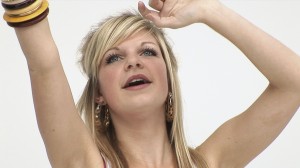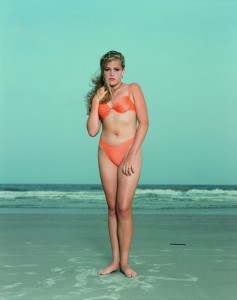
Adolescent awkwardness has been Dutch photographer Rineke Dijkstra’s stock in trade, starting in the early 90s with photos of gangly youngsters on the beach and continuing through series focusing on young mothers, bullfighters, dancers and more. The surprise delivered by her retrospective, which opens June 29th at the Guggenheim Museum, is the marked shift in her subjects’ confidence level from the 90s to the present day; her career now memorializes a time before reality TV and social media primed kids for their moment in front of the camera.
The show opens with young bathers from South Carolina to Croatia posed on the beach and brilliantly lit to highlight pimples, pores and, most notably, bodies still in formation, often in ill-fitting or unflattering swimsuits. Nearly nude, the teens have nowhere to hide, and the tension is palpable, whether the subject is a pretty blonde in an orange bikini or her less manicured Belgian counterpart, whose robotic stance – hands to her sides, palms flat on her thighs – suggests she’s itching to get away.
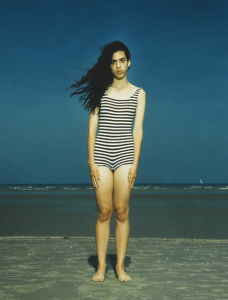
Other subjects kept returning to Dijkstra, notably ‘Almerisa,’ who we meet as a six year old Bosnia refuge in a portrait taken at a Dutch asylum center. Two years later, her blank stare has changed to a smile, later to a knowing expression, and in her teen years to a challenging look. She gains confidence, fills out and by the time she’s twenty has her own baby. As amazing as Almerisa’s physical transformation happened to be (her morphing style choices make it hard to tell she’s the same girl sometimes) distilling her life into an image every year or so denies the complexities and variation of her experience. Watching Almerisa grow up is frustrating as we’re left to guess at what or who influenced her shifting appearance, how she assimilated or challenged her new Dutch environment.
In her pictures of Almerisa, or the Israeli twins Chen and Efrat, whose faces and characters undergo a remarkable change from tame tweens to club vixens and finally to softer featured young ladies in white tank tops, the teen age years look like a scary time without giving a great deal of insight into how the difficulties were navigated. From our after-the-face perspective, Dijkstra’s subjects are survivors. Somehow, sass and sullenness eventually departed, leaving young women who look more in control of their identities and self-presentation.
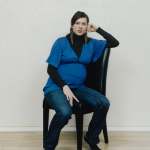
Dijkstra’s more contemporary subjects seem to have missed out on this phase, however. ‘The Buzz Club,’ A video from ’96-97 shot in a Liverpool club shows young people swaying or dancing with restraint to a beat. A little over a decade later, a second video titled ‘The Krazyhouse’ and also shot in Liverpool features five confident teens who could be in trails for ‘Britain’s Got Talent’ so confident and practiced are their moves.
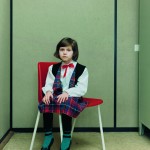
In contrast to earlier work, in which impending transitions created drama (bullfighters range from gormless to wise, Olivier, the model-handsome French legionnaire developed from a sad-looking, vulnerable boy to a hardened man) or individuals like the bathers symbolized a moment of change, it’s become harder to see past the teens’ practiced exteriors. Though they’re more self-possessed, Dijkstra’s recent subjects can still elicit sympathy and concern via the daring cut of a dress or greasy-haired headbanging. But they, like a group of students thoughtfully considering Picasso paintings in one of Dijkstra’s more recent videos, have evolved into having, or at least appearing to have, more of their own agency, an upbeat final impression conveyed in the show’s final galleries.
